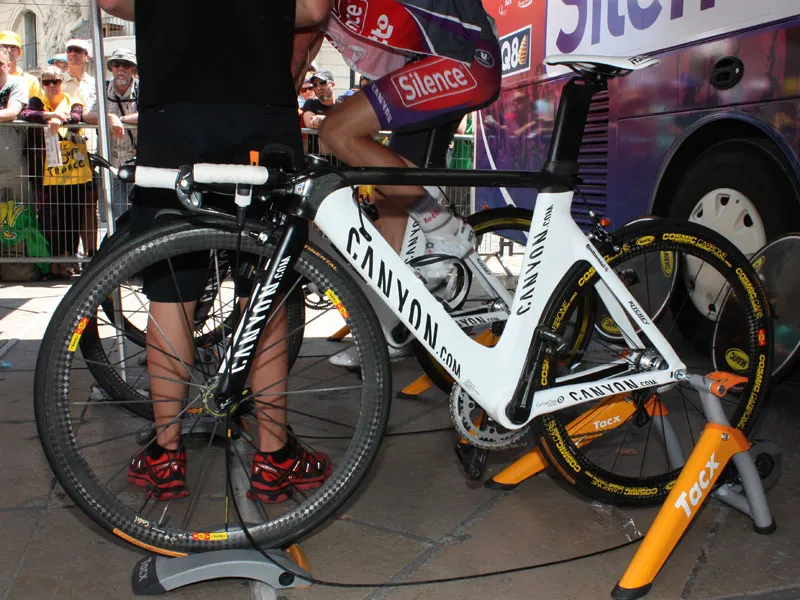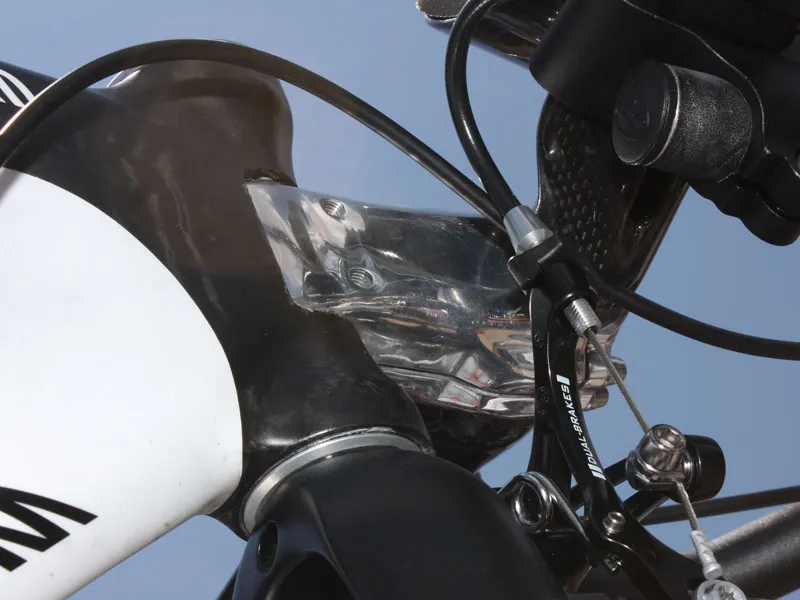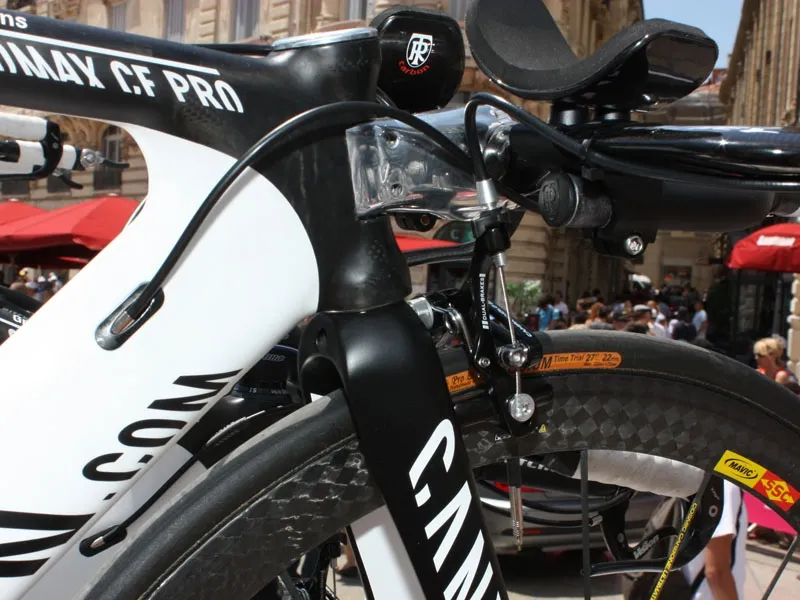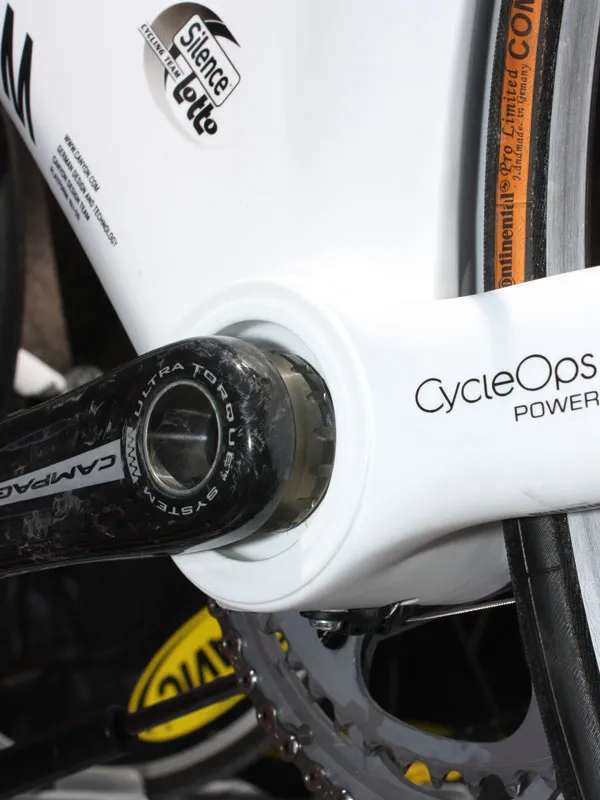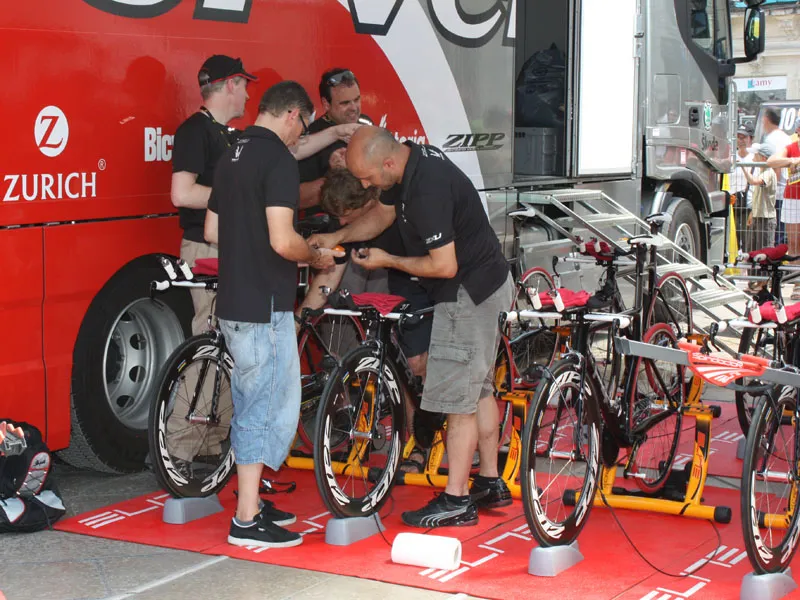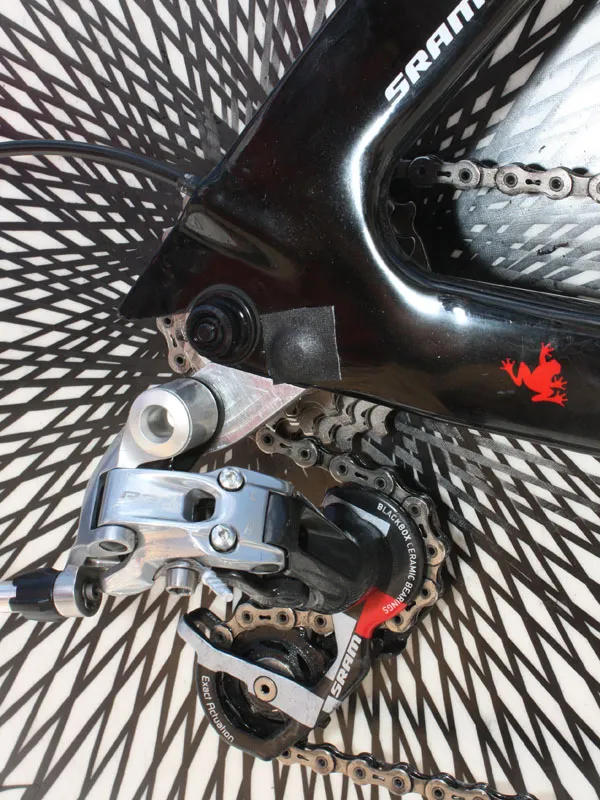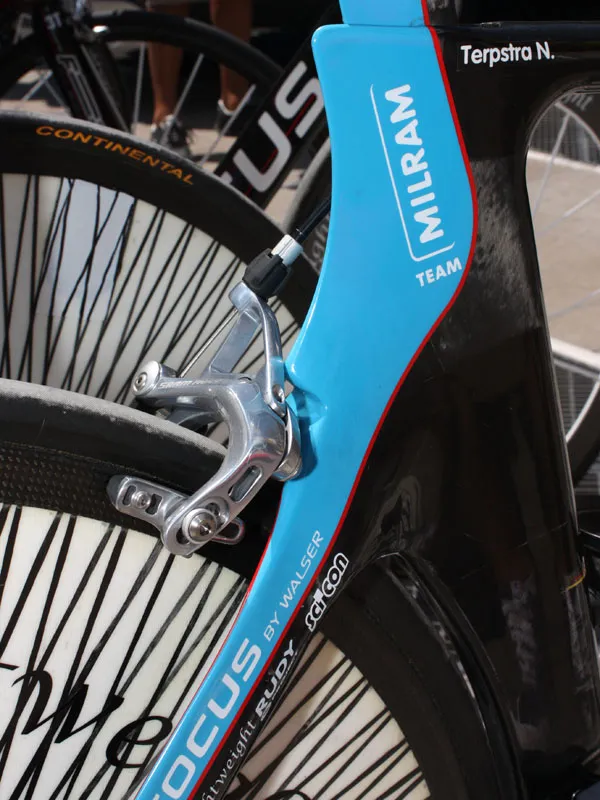Before yesterday's fourth stage of the Tour de France kicked off in Montpellier, BikeRadar's technical editor James Huang was scouring the pits to check out the latest kit on display and find out what was flustering the team mechanics. Here's what he spotted...
Cadel Evans' special Canyon Speedmax CF Pro
ProTour time trial riders are among the absolute best in the world at achieving and maintaining a low, narrow and aerodynamic position on their machines. Cadel Evans' (Silence-Lotto) bar position is especially low however – his base bar sits just 60mm of so over the top of the front tyre – and has presented some setup problems in years past.
Last season, the Aussie's Ridley Dean sported an ultra-short head tube plus a pivoting stem angled sharply downwards to secure his Oval Concepts bar. This year's Canyon Speedmax CF Pro uses a far more radical – and very clever – solution: instead of attaching the stem atop the head tube as normal, Canyon cut out about 40mm from the front of the head tube to make room for a custom two-piece fixed-position stem clamped to the middle of the steerer. Capping the top is a custom aluminium bit that both seals the head tube and provides a way to preload the headset bearings.
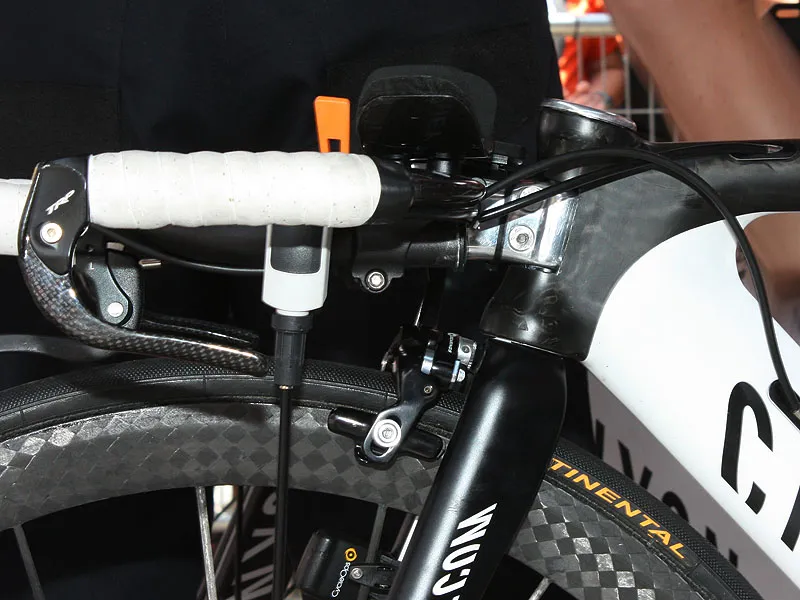
This creation isn't as slick looking as the front-end setups used by the likes of Giant, Specialized, Trek and Felt. But even those wouldn't allow for such an extreme position as Evans' and it's far more important to put a rider's body in an aerodynamic and efficient position as it produces the overwhelming majority of the total system drag. Remarkably, Silence-Lotto mechanics still managed to route the cables in a fairly clean arrangement, too.

Readers might be surprised to hear that Canyon plan to offer this frame configuration to the public. It's apparently safe to ride but the deleted material can't do wonders for front-end rigidity. However, given the UCI's recent rulings regarding the consumer availability of team race bikes, Canyon have no choice but to bring it to market in order for Evans to use it in competition.
Cervélo Test Team mechanics scramble for last minute fix
Cervélo Test Team mechanics were seen scrambling about their pit area making some uncharacteristically last-minute modifications to each rider's Cervélo P4 barely two hours before their riders' scheduled start time.
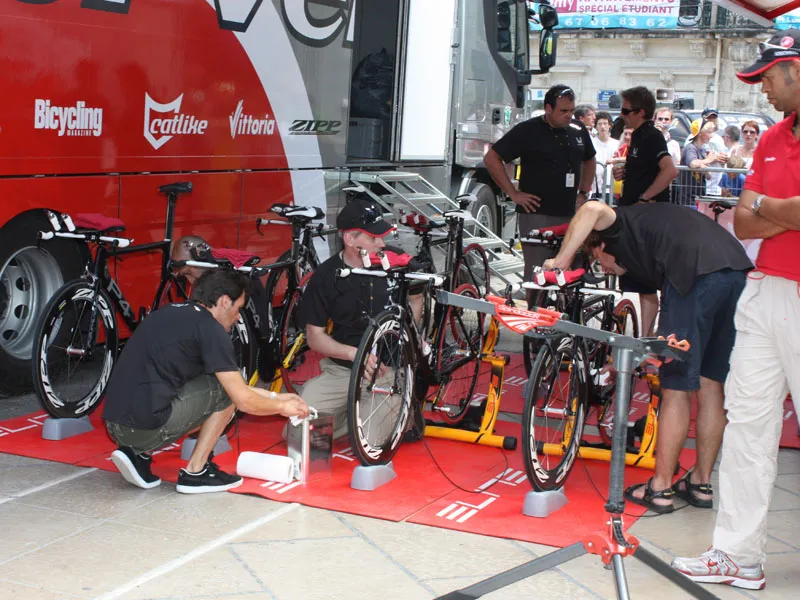
The problem appeared to centre around the team's modified carbon fibre bottle cages, which apparently wouldn't hold on to the matching aero bottles tightly enough over stage 4's occasional bumps. The P4's stock proprietary bottle and cage system would have been fine in this respect but the team had heard that the UCI might take issue with its flush-fit design and instead went with an Elite aero system that the team tweaked to work.

Those modifications wouldn't quite let the matching bottle fully snap into its receptacle as usual though, and given the timing, removing and re-machining the short aluminium plates used to secure the cage to the frame wasn't an option. The solution? Short strips of adhesive-backed Velcro added in between the bottle and cage for extra grip – and of course, the team mechanics had some in the truck.
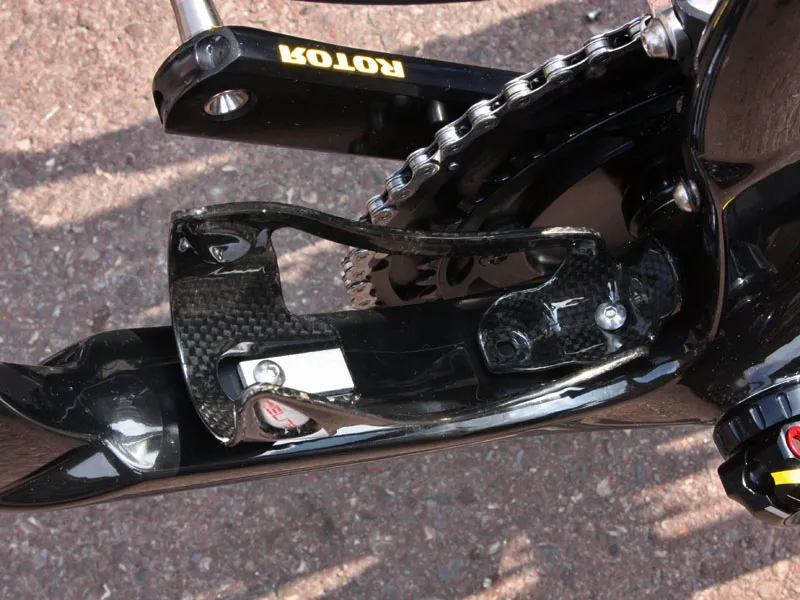
In the end, the team appear to have come across the finish line with all bottles on hand but the situation was obviously far from ideal. Rest assured that the mechanics will have something more proper figured out before the final individual time trial round at Lac d'Annecy on 23 July.
Agritubel look within their borders for new team time trial helmet
Agritubel have switched their helmet sponsor from Spain-based Spiuk to French outfit Ekoi. Though the team's specially painted bright gold metallic aero helmets were impossible to miss during the team time trial around Montpellier, what lies beneath is surprisingly reasonably priced for the sport-level rider.
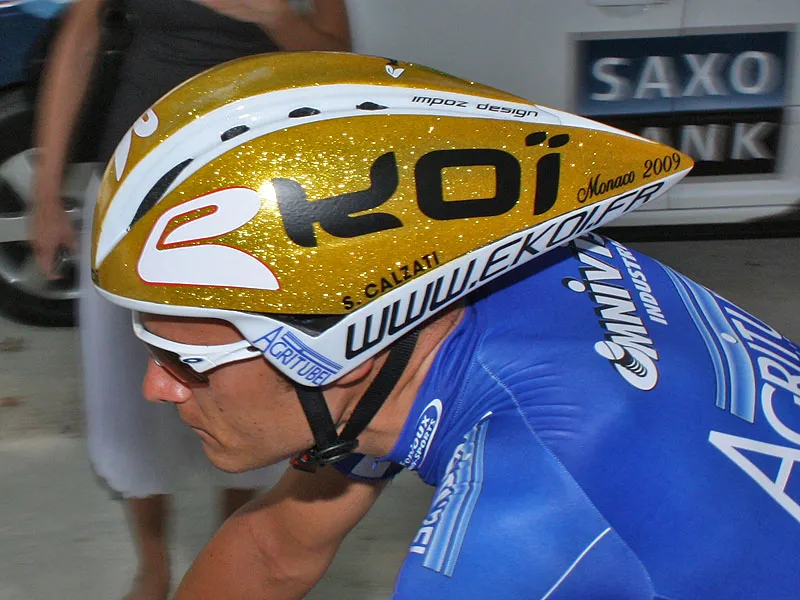
Ekoi sell their Chrono helmet direct from their website for just 109 euros (£95/US$152) yet it offers a reasonable 305g weight, an easy-to-use dial-type retention system, plus an in-moulded shell with a fully enclosed lower rear section, which multiple sources suggest notably reduces drag relative to an open design.
In contrast to most aero helmets currently on the market with a minimal number of vents such as Giro's latest creation and the Specialized TT2, the Chrono sports about a dozen openings to bring in cooling air – good for rider comfort but perhaps not the best for keeping drag to an absolute minimum.
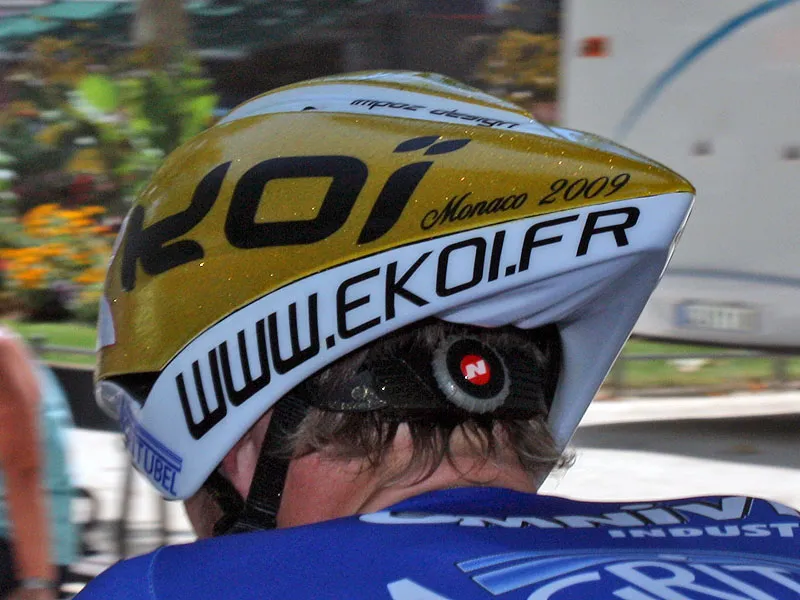
That may be, but given the everyman pricing it's hard to complain. Ekoi offer the Chrono in four different colours – pink, bright green and white with either blue or red accents – but unless you land a contract with Agritubel, you can't have gold.
Milram mechanics go to the tape
Cycling fans generally think of ProTour race bikes as exquisitely tuned and white-glove-clean with cutting-edge engineering and a good dose of black magic tossed in for good measure. For the most part that holds true (the top-level mechanics do truly extraordinary work that deserves more recognition than it receives) but even the best cared-for examples are occasionally shod with a few extra zip ties and electrical tape (see above).
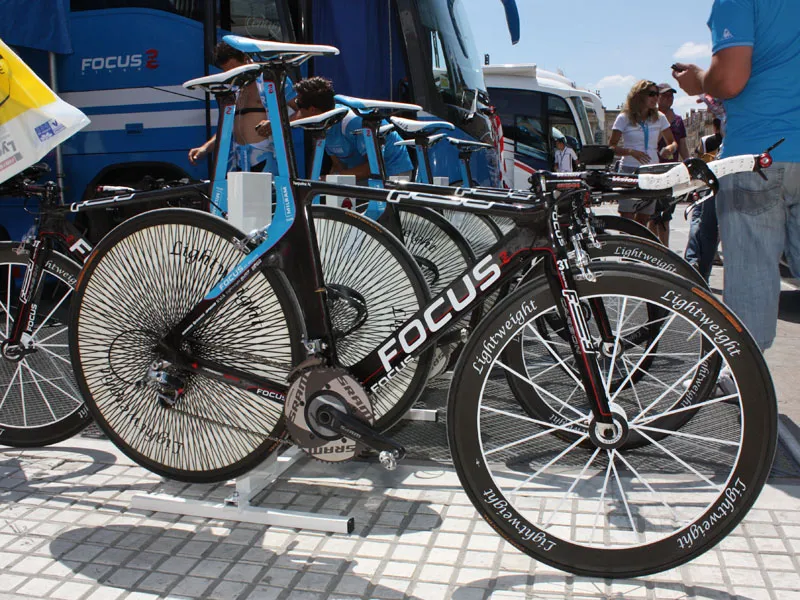
Milram's mechanics were surprisingly light-hearted just prior to the team time trial start yesterday afternoon in Montpellier, their work completed in advance with everything checked and double-checked and everything generally in order. In fact, about the only thing left for the mechanics to do (apart from loading into follow cars in the event of a mishap, of course) was tape over the valve access holes in the team's Lightweight rear disc wheels.

Instead of just using fat pieces of white tape to match the disc surface's base colour, though, team mechanic Filip [sorry, we don't know his surname and weren't able to obtain it prior to posting time] was hand drawing in the missing black lines normally seen on the rest of the wheel – an unnecessary extra perhaps but still a nice finishing touch.
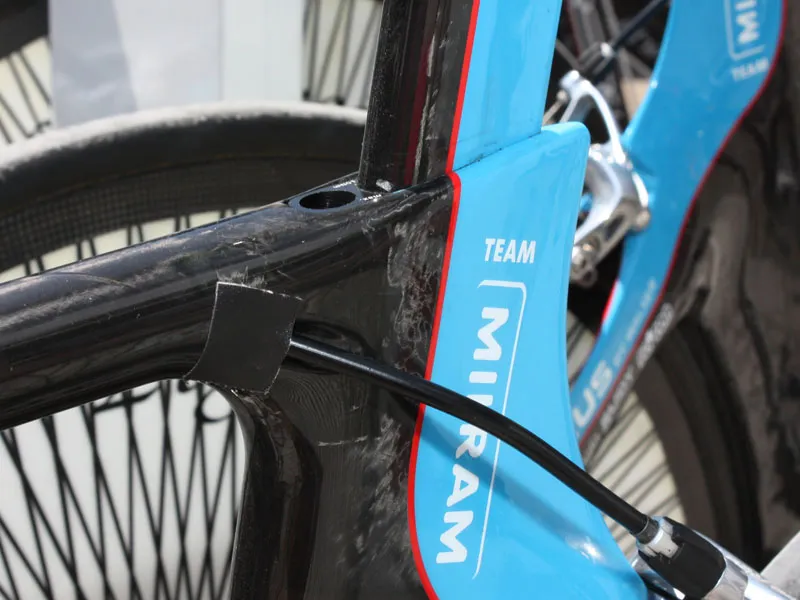
More tape (this time black) was found covering up the mounting bolt for the rear derailleur hanger and the exit point at the top tube for the aft section of rear brake housing. Filip had disappeared by the time we noticed it so we couldn't ask what they were for but they're intriguing nonetheless. A fraction of a gram less drag? Cosmetics? We'll look into it and report back.
